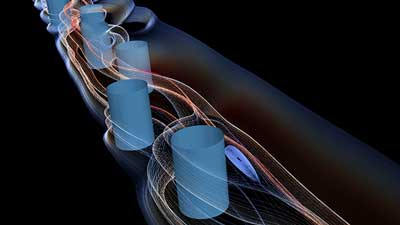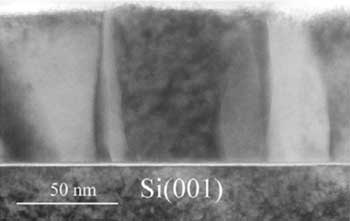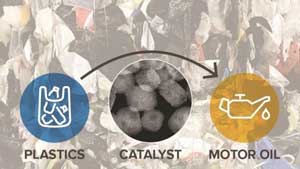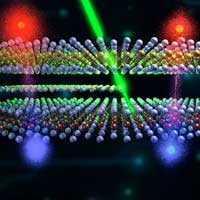 Nacre, the rainbow-sheened material that lines the insides of mussel and other mollusk shells, is known as nature's toughest material. Now, a team of researchers has revealed precisely how it works, in real time.
Nacre, the rainbow-sheened material that lines the insides of mussel and other mollusk shells, is known as nature's toughest material. Now, a team of researchers has revealed precisely how it works, in real time.
Wednesday, October 23, 2019
Nanoscale deformation mechanics reveal mystery of nature's toughest material
 Nacre, the rainbow-sheened material that lines the insides of mussel and other mollusk shells, is known as nature's toughest material. Now, a team of researchers has revealed precisely how it works, in real time.
Nacre, the rainbow-sheened material that lines the insides of mussel and other mollusk shells, is known as nature's toughest material. Now, a team of researchers has revealed precisely how it works, in real time.
Pre-programmed microfluidic systems offer new control capabilities
 New breakthrough could lead to microfluidic devices that are more portable, scalable.
New breakthrough could lead to microfluidic devices that are more portable, scalable.
Scientists close to integrating silicon electronics and spintronics
 Researchers have developed nanoheterostructures, which can be used as a source of spin-polarized electrons for the semiconductor silicon substrate.
Researchers have developed nanoheterostructures, which can be used as a source of spin-polarized electrons for the semiconductor silicon substrate.
Rethinking the science of plastic recycling
 New catalytic method with nanoparticles could mitigate global plastic pollution.
New catalytic method with nanoparticles could mitigate global plastic pollution.
Flexible, transparent and cost-effective lasers
 Researchers have produced novel transparent, all-polymer DBF lasers. The DBF lasers make use of the periodic wavelength-scale nanostructures to backscatter photons for constructive interference.
Researchers have produced novel transparent, all-polymer DBF lasers. The DBF lasers make use of the periodic wavelength-scale nanostructures to backscatter photons for constructive interference.
Excitons will shape the future of electronic devices
 It's a whole new way of thinking about electronics. Excitons - or quasiparticles formed when electrons absorb light - stand to revolutionize the building blocks of circuits. Scientists have been studying their extraordinary properties in order to design more energy-efficient electronic systems, and have now found a way to better control excitons moving in semiconductors.
It's a whole new way of thinking about electronics. Excitons - or quasiparticles formed when electrons absorb light - stand to revolutionize the building blocks of circuits. Scientists have been studying their extraordinary properties in order to design more energy-efficient electronic systems, and have now found a way to better control excitons moving in semiconductors.
Subscribe to:
Posts (Atom)
